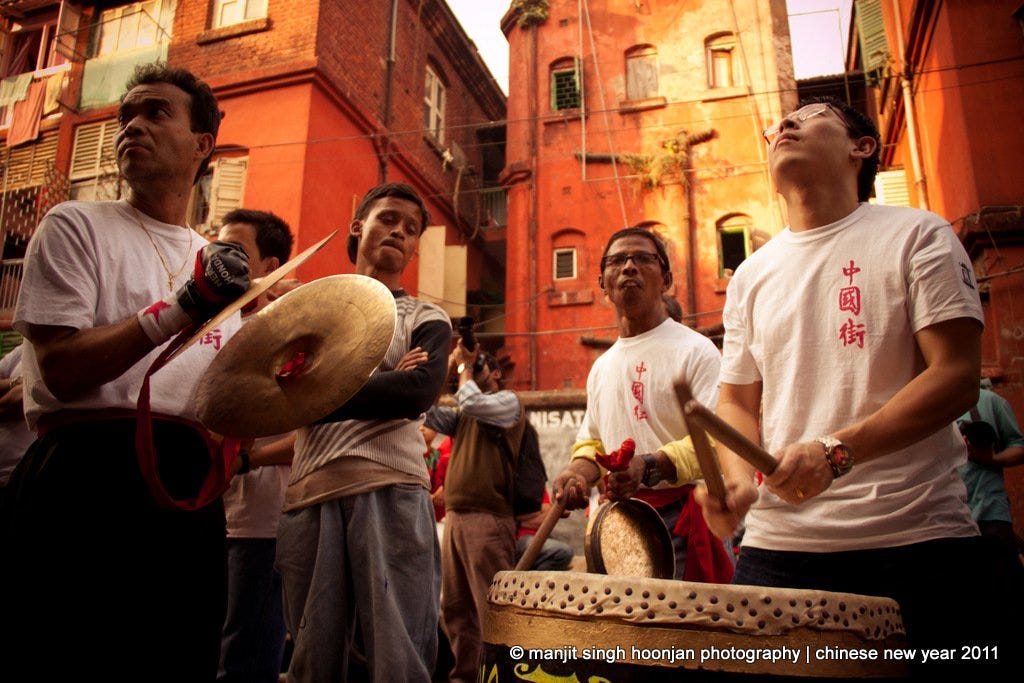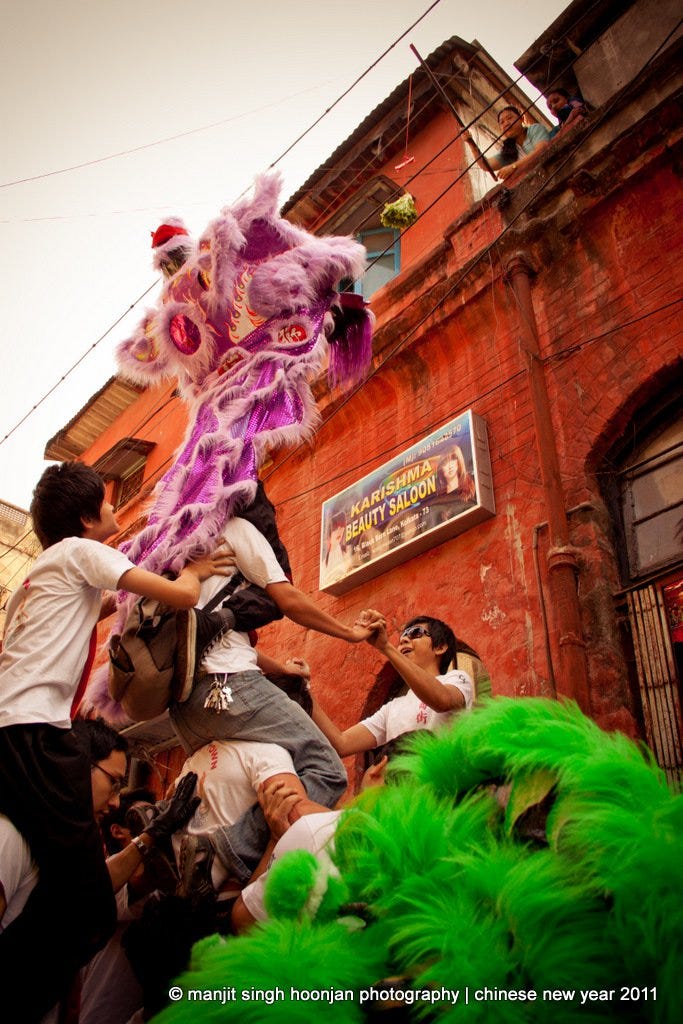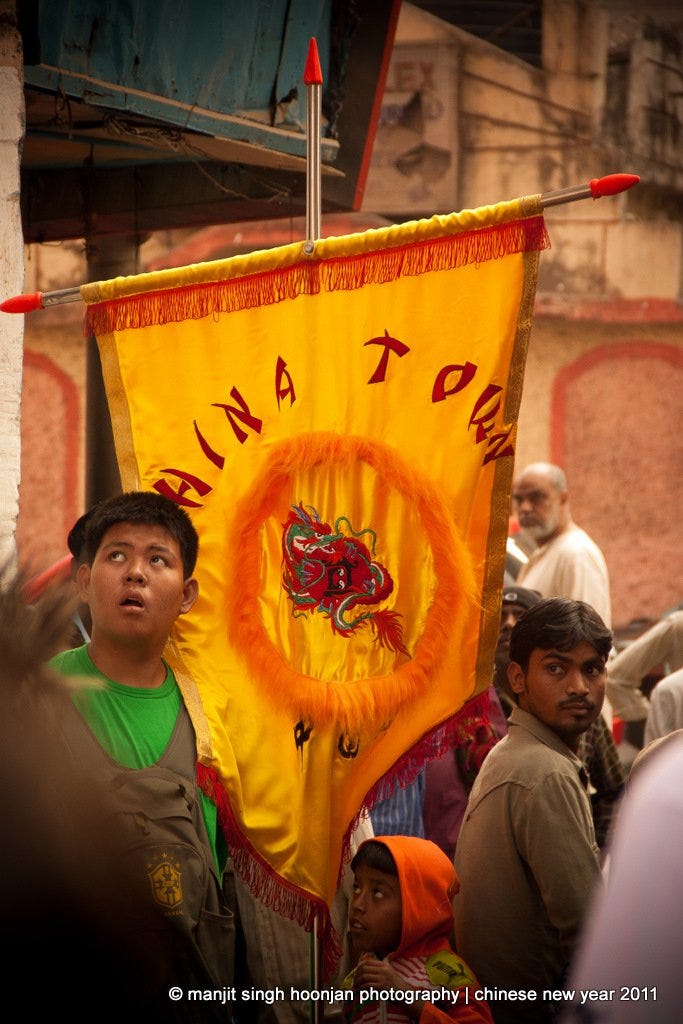India's Last Chinatown
With a presence of more than 200 years, Kolkata's Indian-Chinese community has made a outsize impression across the sub-continent, but risks disappearing forever
As we head into the third decade of the 21st century, the future of Asia seems set to be defined by the continent's twin big powers, China and India. The relationship between the two has, at best, been a testy one, spilling over into outright hostility in 1962 when the nations went to war over their shared Himalayan border, which flared up again in July of this year. To this day, there are claims that the Chinese government is arming tribal separatists in India's northeast, while the presence of the Tibetan Government-in-Exile in Dharamsala has long been a thorn in the side of Beijing. Then there’s the ongoing naval games being played out in the Indian Ocean, and China’s ‘string of pearls’ strategy. Usually though, military concerns are outweighed by economic ones, as India's emerging economy races to catch up with that of its neighbor to the north.
Caught between these opposing forces are a tiny, almost forgotten, third party: the Chinese of India. Just like others fleeing early 19th century war and famine, who emigrated in their tens of thousands to work in the tin mines of colonial Malaya, the Chinese also found their way to Kolkata, then the capital of British India. Many of the first immigrants were Hakka (a Cantonese word meaning 'guest people'), who opened carpenters, leather tanneries, and opium dens - the drug was only made illegal in 1947.
Indeed, as the former British Indian capital, Kolkata was built and driven by a diverse influx of immigrants, including Bengalis, Tamils, Punjabis and Assamese from within the sub-continent, and Armenians, Portuguese, British, and Chinese from without. It explains the proliferation of places of worship you can still see on a morning’s walk in the city's old quarter, which reveals a mosque, synagogue, Parsee and Jain temples, Portuguese and Armenian churches, and a Taoist temple. My unexpected discovery of Kolkata's Chinese heritage came on a walking tour called 'Confluence of Cultures’, with Calcutta Walks. Rather than a guide, you're instead led by an ‘Explorer’– ours was Chinatown resident Manjit Singh (who now runs his own tour company, Calcutta Photo Tours, and is the talented photographer behind all the photos in this story).
It’s hard to describe India to someone who’s never been. Even if you’ve spent almost your whole life in Asia, as I have, the sub-continent is an entirely different world. Life in Kolkata reliably has the appearance of semi-organized chaos, a constant maelstrom of people and traffic interspersed by remarkable moments of spirituality and solitude. It was apt, then, that our very early morning start - “We need to get going before the monster wakes up,” teased Manjit - began inside the serene courtyard of a Buddhist association, where we met a group of friendly Burmese tourists in town on pilgrimage.
Having first enjoyed a quick shot of masala chai tea, which comes served in tiny, handmade pottery cups that you are told to smash after you finish drinking to stop the sellers reusing them, we found ourselves to be the main attraction. After quickly snapping photos of the Buddha statue, we retired back to the street where Manjit’s introduction to the area was drowned out by the cries of two elderly Muslim beggars.
Carrying a sheet between them, they were beseeching local residents to throw coins down from their windows. Through the calls for alms, we managed to catch that this area was called Bow Barracks, red brick buildings which were once home to British and Anglo-Indian soldiers, and now housed a multi-ethnic mix of residents - one nearby letterbox listed the family names Moss, D’Souza and Chow. Manjit explained that this was the centre of Kolkata's Chinatown, and so to this day Chinese New Year celebrations were held in its narrow, red-brick streets. His timing couldn't have been more perfect, as a hand-pulled rickshaw suddenly came around the corner carrying an elderly Chinese lady who was returning from a shopping trip to the nearby market.
According to current estimates, there are only about 5,000 to 10,000 Indian-Chinese still living in Kolkata, with numbers having steadily decreased since the war of 1962. Much as Japanese-Americans suffered badly following Pearl Harbor, the hostility harbored towards ethnic Chinese saw many emigrate to Australia, the US, and Canada (according to a 2005 Indian TV documentary, some, suspected of being spies for the People's Republic of China, were even sent to a remote internment camp in Rajasthan).
Towards the end of our walk with Manjit, he took us to the Tien Hou temple built in 1858. Inside the building, several Chinese sat in silence around a large wooden table. Taking care to not disturb the still air, we carefully walked around the dusty space and its ancient gods. Before leaving, we turned to wish them a happy new year in Chinese, to which they replied in English - with Canadian accents. As it turned out, they were in town from Toronto, and had recently returned to Kolkata to pay respects to their ancestors, who had lived in the city for three generations. There is a large Indian-Chinese community in that eastern Canadian city, where Chinese supermarkets sell tandoori chicken, and the latest Hindi songs are performed at community weddings.
Just around the corner from the temple is the Chinatown market, where dim sum is sold from bamboo baskets, and there’s a spic and span Chinese goods store run by the charming Stella, who totes up your bill on an abacus, and likes aloo loochi as much as the Kolkata version of chow mein found on many streets in the city. As with elsewhere, Chinese immigrants adjusted their cuisine to suit local tastes (adding in garlic, ginger, and chilies) leading to it, remarkably, becoming the most popular cuisine in Kolkata.
To give you a quick Indian-Chinese menu guide, 'Manchurian' indicates the dish comes in a sweet brown sauce, 'Schezuan' means spicy red sauce, and 'Chili' means batter-fried. One evening I sat down for a meal at a Chinese restaurant off Park Street, the city's former commercial thoroughfare, and was halfway through a delicious plate of Chicken Manchurian when a riot of drums and cymbals heralded the arrival of a Chinese lion dance. Performers dressed in red and white outfits shepherded a green-hued lion around two turns of the restaurant before heading back out into the night.
In a moment, it summed up the huge impact the tiny Indian-Chinese community has had on this metropolis of 20 million. When it celebrated the 60th anniversary of the People's Republic in 2008, China listed famed 20th century Kolkatan novelist and poet Rabindranath Tagore as one of the 100 people globally who had influenced the country the most, announcing plans to build a museum at the Nobel Laureate's residence in Kolkata to house the bard's works written during his visits to China. In their own way, the Chinese of Kolkata have helped similarly bridge the cultural divide, but I just hope that their contribution is also recognized, before it too becomes another fond memory.










Very interesting Simon - thank you!